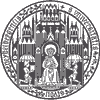

|
|
HEIDRAUHFDB001_034 Madagascar 1959 |
History of the Project |
2012 14. December Ca. 400 images of Type specimen in spiritu included in database. This is as far as we know the first attempt to present three-dimensional alcohol Type-specimens in the web, linked to information on their gathering. Illustrative examples are the entries of Alluaudiopsis marnieriana Rauh and Cynanchum rossii Rauh.
2012 15. October All «Pseudo-Rauh-Numbers», which are to be found in the acquisition books of Heidelberg Botanic Garden, stored in database. These are a total of 26.653 numbers used for material, sent to Werner Rauh by a third party. Among them 2.998 numbers may refer to original Rauh-material not mentioned in fieldbooks or mentioned in lost books.
2012 8. May Last dataset from the fieldbooks scanned 2008/2009 entered into database.
2012 3. February Module activated to link to herbarium specimen collected by Werner Rauh in different herbaria in the world (= «Virtual Rauh-Herbarium»).
2011 9. November 10.000th dataset entered.
2011 17. March The project's database gets linked to TROPICOS.
2011 23. February Presentation of the project at the poster session during BioSystematics Berlin 2011 at Freie Universität Berlin. Poster (1.3 MByte).
2011 15. February The project's database is linked to the Botanical Garden's and Herbarium's database. Beyond that a lot of images of Rauh's plants are made accessible for the public.
2010 December 3rd The 1.000th entry stored in database: Rauh 73995: Euphorbia aureoviridiflora var. manamboensis, collected at Cap Manambato (NE-Madagascar). This collection is the Holotype of the later published species Euphorbia capmanambatoensis Rauh.
2010 October 19th The project was presented at the meeting of the International Organization for Succulent Plant Studies at Nees Institute (University Bonn) and accepted as one of the IOS's International Projects. [PDF-File (387 kByte)]
2010 August–September Entries from Peru 1954 and 1956 completely stored in the database.
2010 Mai–June A number of powerful PHP-scripts are set up for easily entering data to the database.
2010 April Graphical User Interface (GUI) installed: The database (Username: ‹gast›, no password required) can be searched by name, date, location and ID (Rauh's fieldnumber).
2010 March At the end of March two expeditions were completely stored in the Werner Rauh Heritage Project's database (Username: ‹gast›, no password required): Chile 1984 and Madagascar 1994.
2009–present More than 1.200 herbarium sheets, with type material collected by Werner Rauh, were digitized in cooperation with ALUKAmore about ALUKA and HEID. These sheets are now available for research at JSTOR. This work is currently in progress.
2009 December 1st Official launching of «The Werner Rauh Heritage Project» which set the design of the WRHP-data-model and created the MySQL database.
2009 October The Klaus Tschira Stiftung gGmbH granted three years of funding for the project.
2008–2009 Original fieldbooks scanned (8.776 scans) in cooperation with Heidelberger Akademie der Wissenschaften. The originals were generously provided by Prof. Dr. Wilhelm Barthlott (Bonn). The scanning was funded by ALUKA.
2000 When Werner Rauh died, he left behind, apart from other things, thousands of living plants in the Botanical Gardens Heidelberg, tens of thousands of herbarium sheets and alcohol preserved specimens in the Herbarium HEID, and in addition, innumerable photographs and slides. Copies of Rauh's field books had been archived in Heidelberg, whereas the originals were transferred to Rauh's former student Prof. Dr. Wilhelm Barthlott (Nees Institut für Biodiversität der Pflanzen, Universität Bonn) after Rauh's dying.

